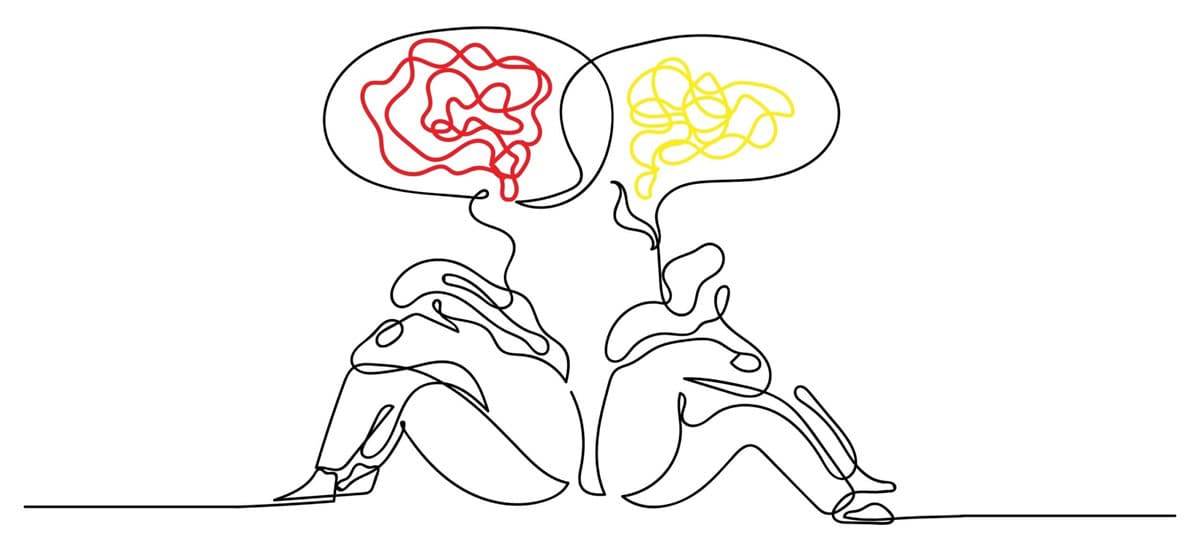Psychosexual Dysfunctions
Please click on the titles below to learn more

Female Psychosexual Dysfunctions
You may have seen increasing references to Female Sexual Dysfunction (FSD) over the last years – but what does it mean? FSD is an umbrella term that refers to the range of sexual difficulties experienced by women, and is often classified under four broad headings:
1. Lack of sexual desire.
2. Difficulties in becoming aroused
3. Lack of ability to orgasm
4. Painful sex.
Male Psychosexual Dysfunctions
Since Viagra burst onto the scene in 1998, erectile dysfunction is the sexual difficulty most often talked about; but men can in fact experience a whole range of sexual problems. These can broadly be classified under four categories:
1. Lack or loss of sexual desire
2. Erectile dysfunction (ED)
3. Ejaculatory difficulties
4. Painful sex
Female - Lack or Loss of Desire
Although women do not have less sexual desire than men do, it is relatively common for women in established relationships to find that they have difficulty feeling spontaneously sexy and therefore in “getting started”. Many such women are mostly able to respond if their partner initiates sex, and to enjoy it. Where this is the case, the apparent lack of desire is usually not a serious problem, although some partners do feel resentful if they are always the one who has to ‘make the first move’ and face possible rejection. In this instance, it is often possible through sex therapy to find ways of feeling more sexual, and for the couple to negotiate more equality in initiating sex.
Female - Difficulties in Becoming Aroused
Some women want to engage in sexual activity but find that, when they do, they experience little or no sensation. The physical signs of sexual arousal in women are flushing of the skin; increased genital and breast sensitivity; hardening of the nipples; the clitoris swelling and becoming erect; wetness or lubrication (often hidden inside the vagina); a sense of swelling, warmth or tingling in the vulva and vagina; and an elongating of the vagina. Arousal also happens in the mind, as pleasure, feeling sexy and perhaps thinking sexual thoughts. In some women, these changes are partial or absent; this is the equivalent of erectile dysfunction in men.
Female - Difficulties in Attaining Orgasm
Some women worry if they do not always reach orgasm during intercourse, but approximately three quarters of women do not achieve orgasm through thrusting alone. The majority of women need steady clitoral stimulation for orgasm to occur, and many sexual positions do not provide this sufficiently on their own. There are, however, approximately ten percent of women who are unable to reach orgasm despite being sufficiently aroused to have sex; this is called anorgasmia. Some women enjoy sexual activity without reaching orgasm; anorgasmia is only a problem if the inability to orgasm results in dissatisfaction or unhappiness for the woman or her partner.
Female - Painful Sex
Painful sex for woman can be due to a number of reasons, for example: Vaginismus or Vulvodynia. Sex therapy can be extremely successful in these cases.
Male - Inhibited Desire
It is important to keep in mind that the different categories often overlap; for example, many men who have trouble getting an erection will go on to develop loss of desire, in response to the anxiety and embarrassment that erectile failure can too often cause. Inhibited (low) desire may be described as a lack (or loss) of:spontaneous sexual thoughts and fantasies, and/or the wish to initiate or respond to sexual activity.
Male - Erectile Dysfunction
Erectile dysfunction, sometimes called ED or impotence, affects around one in every five men; this figure increases significantly with age. Most men will find they are unable to get or maintain an erection occasionally, perhaps because of tiredness, stress or too much alcohol; this is quite normal. ED is only diagnosed when the problem is persistent and recurrent. Unfortunately, it is very easy for a “one-off” incident to turn into a persistent problem, through fear that the difficulty will recur. This is because, for many men, a properly functioning penis is key to their sense of ‘manhood’; thus the stakes are high, and anxiety is known to have a considerable effect on a man’s ability to become sexually aroused.
Male - Ejaculatory Difficulties
These can be divided into three main groups:
Premature/early ejaculation:
Problems with ejaculating/coming too soon
Delayed Ejaculation:
Finding it takes longer than you would like to ejaculate
Anejaculation:
Failure to ejaculate
Male - Painful Sex
Painful sex for men can be due to a number of reasons, for example:
Phimosis:
Tight foreskin
Peyronies:
Bend in the penis (it is a common to have a curve in the penis however if it causing you issues it may be helpful to speak to someone)
